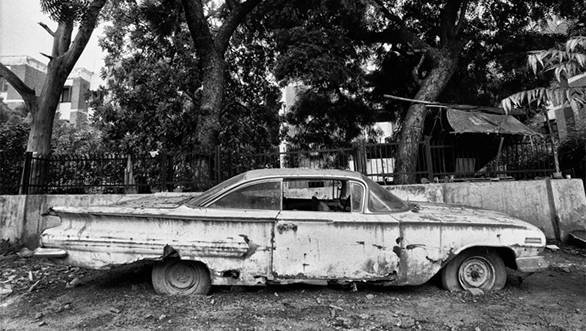The art of restoring old cars
A few months back I wrote about mechanics losing their repair skills because all they now do is replace parts. Many of you sent in some remarkable responses. After going through the feedback and doing some investigation, few fascinating facts emerged.
Mechanics at authorised service centres certainly don't repair parts, they just replace them. But one sphere where the skills of mechanics who repair parts are really valued is in the auto restoration business. Yes, a lot of the earlier garages and many eager enthusiasts have taken to restoring vintage and classic cars, and this requires very skilled mechanics who can completely strip open parts and repair them.

The classic car movement is now growing in India as is the number of car collectors. Thanks to this, old car values have risen and it now makes sense to even restore more common cars like Morris Minors, Ford Model As, Volkswagen Beetles, Heralds, Ambassadors etc. Fiats are also being collected and restored, and we now even have a dedicated "Fiat Owner's Club".
Restoring an old car requires many special skills. First you have to research about the car and get all the correct information. What was its year of manufacture? Who was the coach builder? What were the original fittings and accessories? What are its original technical specifications? What colours did it come in and what were the materials used for its upholstery? Then you check if the car that is to be restored had any original parts changed or if any modifications have been made to it.
Very often on old cars you find that to keep them running, some mechanic had in typical Indian "Jugaad" style done some innovation and used a part that was not original equipment. If instruments and meters went bad and the original ones were not available, you replaced them with the ones from newer cars. Quite often the same was true for many other parts like door handles, window winders, windscreens, lights, bumpers, body trim, monograms, mascots, wheels, steering, seats etc. Mechanically, also many changes could have been made, and it's common to find that the electrical system and wiring and switches are also quite different from the original ones.
Many collectors also pick up cars that have even major parts like the engine and transmission missing. The simple truth is if you buy an old car, it will more often than not have parts that are different from the original and it's also likely that some of its original parts will be missing.
If you are a genuine classic car enthusiast, you want your car to be as original and authentic as possible. This is a big challenge for a car restorer. To make working on the car easier, he needs to try and get original photos, or brochures and of course the original workshop manual. Then you systematically take apart the car and get rid of all the non-original bits. Then starts one of the most difficult jobs sourcing of original parts.
Online buying has made this somewhat easier than in the past, but it is still a big challenge. The Internet has also made getting information on the car less tedious. You can connect online with people who have similar cars and learn from their knowledge and experiences. Car collectors are normally most happy to help fellow car owners with information about repairs, parts, contacts etc.
In several cases it may not be possible to get original parts. Then the car restorer has to fabricate and make the parts himself. You will be surprised as to what all can be fabricated and made by a resourceful restorer. Once the information about the car and the parts are in place, starts the work of restoring the car. The body is worked upon, all rusted panels are patched and replaced, and necessary new panels are fabricated.
Sometimes you even find cars where all the panels have been made from several sheets of sheet metal. Many old cars also have a fair bit of woodwork and carpenters recreate these parts. While the repair, fabrication, and denting and painting of the body are important, the mechanicals also need to be overhauled and put into shape. Then there are the upholstery, dashboard instruments and switches, wiring, electrical system, followed by lights, body trim, bumpers, wheels, tyres and what have you. If you look at it closely, restoring an old car is possibly more difficult than manufacturing a new one.
The business of restoring old cars has become an important small-scale industry in India, and fortunately it is keeping alive the repair skills of our mechanics who are amongst the best in the world. What's also good is that these old-timers are passing their repair skills to a few new-generation mechanics. Events like the Cartier Concourse D' Elegance have also helped raise restoration standards in our country.
The work now being done by some of our restorers is indeed very good, and the cars that emerge from car collector Viveck Goenka's restoration shop are certainly world class. Interestingly, several cars that come from overseas to participate in international classic car events in India often stay back to get some restoration done. Repainting a car in Europe can cost anywhere from $5,000 to even more than $10,000! In India you can have a good job done in about Rs 1-1.5 lakh!














